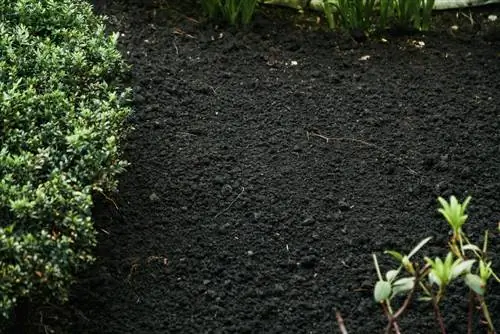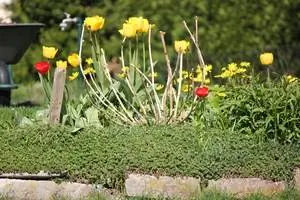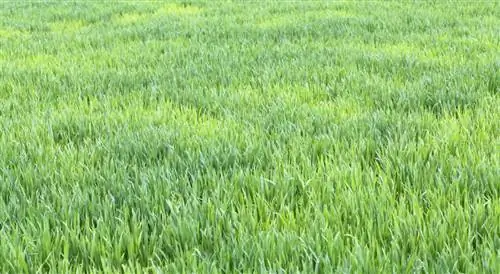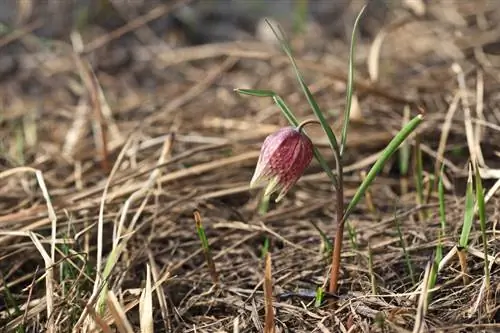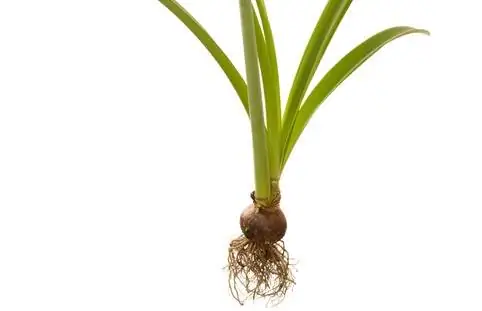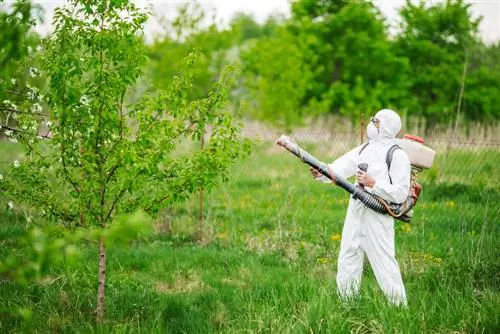- Author admin [email protected].
- Public 2023-12-16 16:46.
- Last modified 2025-06-01 06:02.
Box trees can be used in many ways in the garden and brighten up many corners. However, only as long as you care for them consistently and fertilize them regularly - otherwise the popular trees themselves could quickly become a waste for compost. But be careful: it's not enough to just apply any fertilizer - when and how are very important.
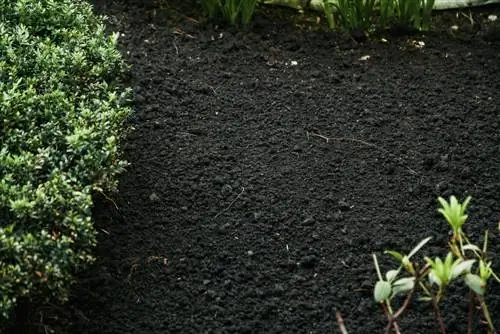
How and when should you fertilize the boxwood?
To properly fertilize the boxwood, use special boxwood fertilizer or green plant fertilizer and fertilize during the growing season from April to September. Fertilize potted plants weekly, planted boxwoods every 3-4 weeks. Do not fertilize from September onwards to avoid winter damage.
Why should you fertilize boxwood?
The slow-growing and undemanding box is often forgotten when fertilizing, as long as it doesn't get strange leaf spots and the big guesswork begins. These requirements are particularly relevant for the well-being of the tree:
- suitable location
- loose, well-drained and calcareous soil
- It also tolerates slightly loamy soil well
- regular watering
- regular fertilization of even planted box trees
The last point is particularly relevant because the beautiful green leaf color only develops with the right supply of nutrients.
How can you fertilize boxwood?
Box itself is not a heavy feeder, but primarily needs nitrogen for growth and potassium for resistance. A deficiency quickly becomes noticeable on the leaves, for example as brown-red discoloration due to a nitrogen deficiency. Phosphorus, on the other hand, cannot be dispensed with, but boxwood only needs it in very small quantities. The mineral promotes flowering, which in turn only rarely occurs in boxwood.
Box tree fertilizer and green plant fertilizer
Box can be easily supplied with nutrients with a special boxwood fertilizer, the composition of which is tailored precisely to the needs of the plant species. A commercial green plant fertilizer is also suitable. However, before fertilization, you should have a soil analysis carried out by a suitable laboratory to determine the actual fertilization requirement. Based on the recommendations, a needs-based supply is provided and the risk of over-fertilization is also reduced.
Organic fertilizers
You can't go wrong with organic fertilizers such as compost and horn shavings. Horn shavings in particular are rich in nitrogen and are therefore ideal for boxwood. With compost, on the other hand, there is the problem of possibly carrying germinable seeds from composted weeds into the bed. You can avoid this by covering the composter with a lid and refraining from composting seed weeds. An organic supply has the advantage that over-fertilization is virtually impossible due to the slow and gradual absorption of nutrients.
Can you fertilize boxwood with blue seed?
No question, blue grain is a true all-round fertilizer in the garden and is basically also suitable for boxwood or at least does not harm it. However, blue grain, with its high phosphorus content, has the wrong nutrient composition, which is why fertilizing with it would be like the proverbial “throwing pearls before swine”. The box cannot absorb or utilize all the nutrients - in the worst case scenario, over-fertilization with all its negative side effects would result.
When should boxwood be fertilized?
In principle, fertilization is only necessary during the growing season between April and September. If you provide the box with a slow-release fertilizer in April, you won't have to worry about it for the rest of the year - apart from fertilizing with patent potash, which should be done in August. If, on the other hand, organic fertilizers are used, the supply should take place regularly at intervals of three to four weeks. In this case, work a maximum of three liters of compost per square meter and a level tablespoon of ground horn shavings into the root area.
Stop fertilization in autumn - why?
From the beginning of September you should not supply the boxwood or other garden plants with nutrients. Fertilization continually stimulates the plants to grow new shoots, which at this point could become fatal. The fresh shoots would no longer ripen in time before winter and would freeze to death at the first sub-zero temperatures - from which the entire tree suffers. Instead, apply potash magnesia or patent potash in August, this product supports the plants' resistance to winter weather conditions.
The right fertilization for boxwood in pots
Box in pots depends on a regular supply of fertilizers, because such a plant cannot feed itself alone. It is best to fertilize potted specimens weekly with a liquid green plant or special boxwood fertilizer, which is administered together with the irrigation water.
Tip
Coffee grounds are an environmentally friendly and inexpensive fertilizer that adequately supplies many balcony and garden plants. However, coffee has the disadvantage that its ingredients cause the pH value of the soil to drop - which is harmful to the lime-loving boxwood. If you still want to fertilize with coffee, you should lime your Buchs regularly.

